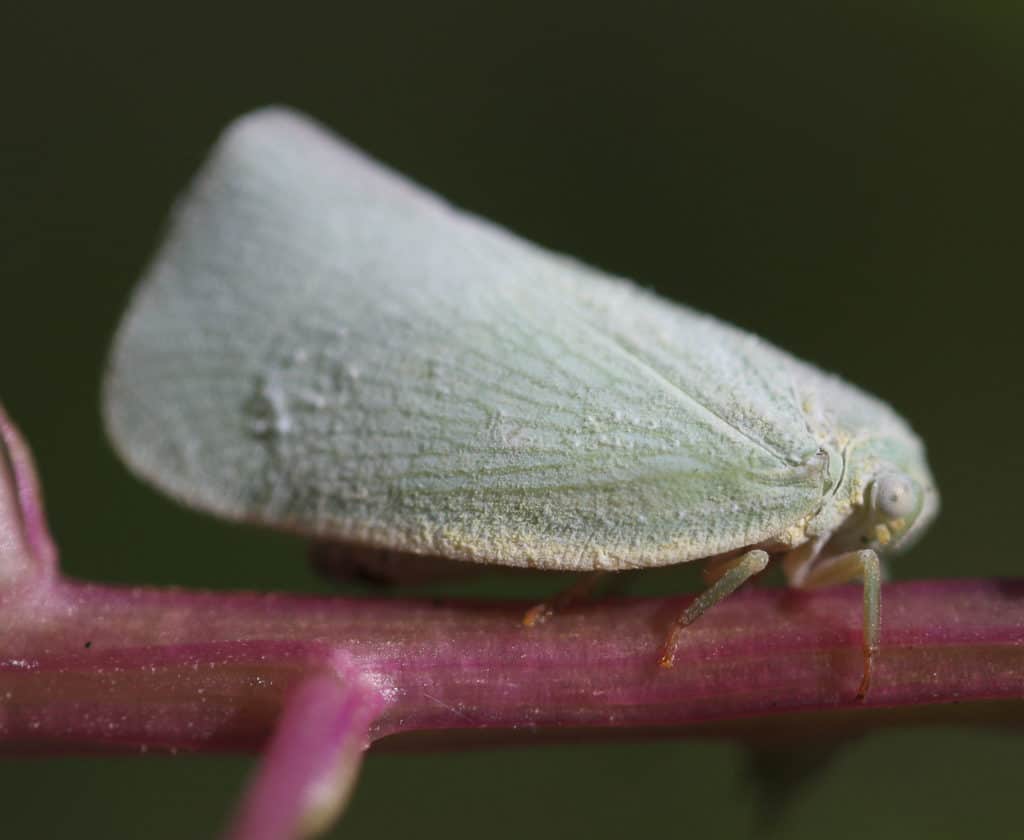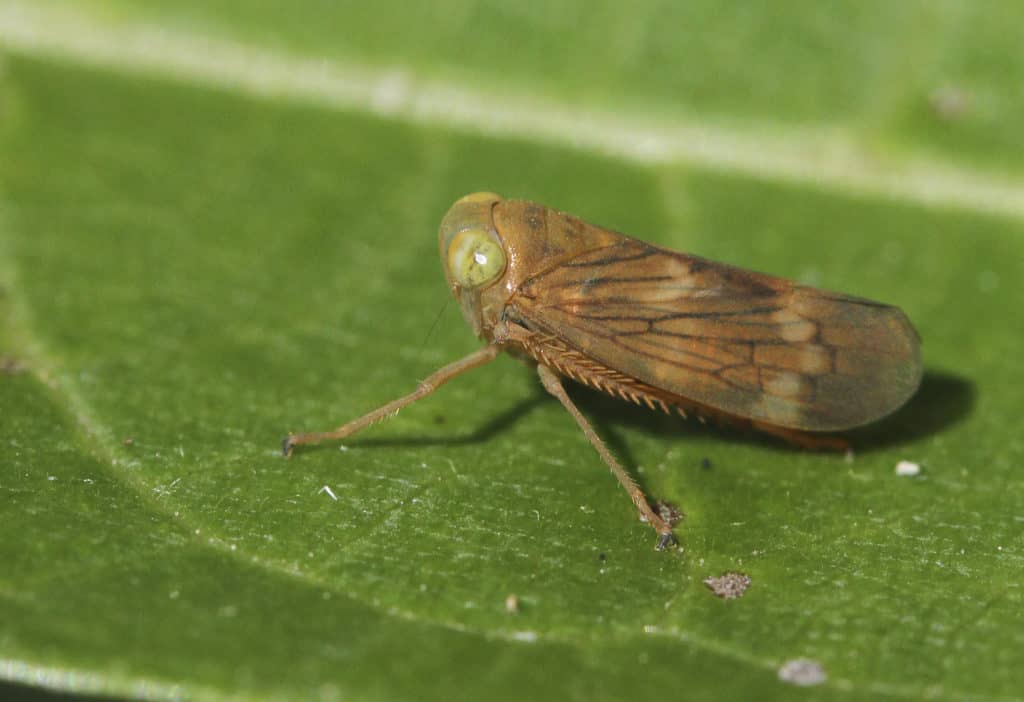Creature Feature
A Bug with Springs
By Wayne Bierbaum
As I walk through my yard, tiny bugs will spring and fly out in front of my steps. If I slowly bend over and look at the grass blades, the tiny green leafhoppers in the shape of an eyeglass case but with big eyes, quickly slip to the backside of the leaves. If I reach down towards one it will spring into the air and then open wings and fly.
The spring-loaded leafhopper is one of the most common yard insects. They literally have springs in their legs and are constantly ready to launch. Malcolm Burrows in the Journal of Experimental Biology described in detail the mechanism and their amazing speed. Leafhoppers can jump over 100 times their body length and launch with a G-force of over 700g for a power output of 388mW (milliwatts). When you watch them up close they will disappear as they launch at 0.8msec. When they reach the end of their jump, wings open as they start to extend their escape.
These leaping insects come in a variety of color schemes. Most commonly they are green but I see white, black, orange-striped, red-striped, blue and others. There are also ones with oddly shaped heads. They do go through several growing morphology changes and get more colorful with each change.
Leafhoppers are not considered beneficial insects. They live by sucking the fluids out of plants and in doing so they can transmit viruses and fungi to plants. Luckily, they can be controlled by beneficial bugs like ladybugs and lacewings.
Removing and composting plant material in gardens, especially in the fall, removes the leafhopper eggs and reduces a spring hatch. They also can be controlled by plant soap and vigorous water spraying.
They are amazing animals. Just think about it: if a 5-foot human could jump like a leafhopper that would be the equivalent of jumping 500 feet high.



